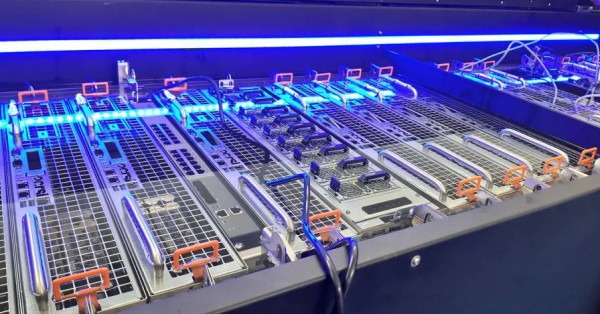A new joint solution from Rohde & Schwarz (R&S) and the Taiwan Space Agency (TASA) consolidates electromagnetic compatibility (EMC) and antenna measurements into a single, production-grade test chamber, signaling a shift in how satellite payloads will be validated for Non-Terrestrial Network (NTN) and mission-critical services.
Why It Matters for NTN and Mission-Critical Services
Satellite payloads are becoming more complex as operators pursue 5G NTN, direct-to-device services, and multi-band connectivity across LEO/MEO/GEO orbits. Traditional lab set-ups split EMC and over-the-air (OTA) antenna testing into separate, costly facilitiesslowing schedules and introducing correlation risk. By integrating both disciplines in one chamber, TASA can validate RF performance, emissions, and immunity under consistent test conditions and configurations, improving time-to-launch and de-risking interoperability with terrestrial networks.
What Telecom and Enterprise Buyers Should Know
With 3GPP Release 17 introducing NTN support and Release 18 advancing 5G Advanced features, operators and device ecosystems must prove reliable satellite-cellular interworking across fading, Doppler, and spectrum-sharing scenarios. This solution enables agencies and primes to tighten requirements, run repeatable campaigns, and verify real-world performance before field trialsessential for SLAs spanning IoT, mobility, and government-grade communications.
What Rohde & Schwarz delivered
The TASA deployment combines R&S hardware, software, and engineering with a locally built Compact Antenna Test Range (CATR) reflector to achieve dual-mode EMC and antenna measurements in one chamber.
Single-Chamber Workflow: Seamless EMC and OTA Testing
The facility can switch between EMC compliance/immunity and antenna/OTA characterization without moving the device under test (DUT) to a separate room. This reduces logistics overhead, eliminates re-cabling variability, and improves correlation across testscritical when tuning payloads, phased arrays, or transceiver chains that span wide frequency ranges.
Instruments and Software: R&S ZNA43 and AMS32
An R&S ZNA43 vector network analyzer provides high-dynamic-range S-parameter and gain/phase characterization up to 43.5 GHz, covering key satcom bands and supporting precise calibration for active arrays and feed networks. Customized R&S AMS32 measurement software orchestrates chamber control, test sequencing, and data capture to align EMC and antenna workflows with consistent metadata, traceability, and automation hooks for CI/CD-style test operations.
CATR with Diamond-Shaped Reflector for Clean Quiet Zone
The chamber integrates a CATR reflector, co-developed with a Taiwan-based third-party supplierusing a patented diamond-shaped geometry. The design minimizes chamber interactions by reducing blockage and scattering between the reflector, feed, and the DUT positioner. The result is a cleaner, quieter zone, lower multipath, and higher measurement fidelity for complex payloads and beamforming antennas.
Localized Integration with Global-Grade Metrology
R&S engineered the system to interoperate with local components while ensuring performance integrity, demonstrating a practical model for agencies and primes that want global-class metrology combined with regional supply chains, serviceability, and cost control.
Strategic implications for NTN, 5G Advanced, and satellite programs
Converged EMC/antenna validation strengthens cross-domain reliability targets that span space, ground, and consumer devices.
Validating Coexistence with Terrestrial 3GPP Networks
As satellites link with cellular base stations and user equipment, lab setups must prove coexistence, emissions, and receiver robustness in scenarios aligned to 3GPP NTN profiles. An integrated chamber supports iterative optimization of RF front ends, filtering, and beam management against interference and spurious emissions that could degrade terrestrial operations.
Reduce Cost, Footprint, and Test Schedules
Single-chamber investments can replace or defer separate EMC and OTA rooms, reduce facility square footage, and compress test schedules. For programs navigating tight launch windows, the approach also reduces rework and retest loops caused by cross-facility discrepancies.
Technical challenges and how the design addresses them
EMC and OTA testing impose conflicting requirements on chambers, instrumentation, and fixturing; this design balances both without compromising accuracy.
Balancing EMC Requirements with OTA Accuracy
EMC setups demand shielding effectiveness, absorber performance across wide bands, and controlled emissions/immunity paths, while antenna tests require a high-fidelity quiet zone and precise far-field emulation. The CATR-based approach and tailored absorber layout enable both modes with fast reconfiguration and stable calibration.
Maximizing Quiet-Zone Fidelity and DUT Placement
The diamond-shaped reflector geometry reduces coupling among the feed, reflector, and positioneroften a primary source of quiet-zone distortion. Cleaner plane-wave conditions elevate confidence in gain, pattern, and polarization metrics for phased arrays and reflector-fed payloads.
What network and satellite teams should do next?
Program leaders should align test strategies with NTN roadmaps, multi-orbit architectures, and emerging regulatory expectations to avoid late-stage integration surprises.
Actions for Satellite OEMs and Primes
Audit current EMC and OTA workflows for correlation gaps, then standardize on a unified calibration and data model across both domains. Prioritize instrumentation that spans intended frequency roadmaps, including Ka and beyond, and invest in automation to accelerate regression testing during late-stage tuning.
Actions for MNOs and NTN service providers
Define lab scenarios that reflect real deployment conditionsDoppler profiles, synchronization, and adjacent-channel emissions require suppliers to demonstrate end-to-end performance across satellite and base-station links. Tie acceptance criteria to service KPIs such as link availability, spectral efficiency, and device power performance.
Procurement: Standards, Integration, and Upgrade Paths
Favor platforms that integrate third-party components without sacrificing measurement integrity. Look for vendor support on standards-based EMC regimes (e.g., CISPR/MIL-STD/ECSS-class requirements) and antenna metrics, with clear upgrade paths as new bands and waveforms emerge.
2025–2026 Outlook: Standards, Automation, Supply
Technology, standards, and supply dynamics will shape how quickly dual-function chambers become the norm for satcom validation.
Standards and Test Cases: 3GPP Rel-18/19 Expansion
Expect expanded NTN test profiles in 3GPP Release 18/19 and increasing emphasis on coexistence with terrestrial spectrum users. Agencies will seek tighter mapping between lab conditions and flight operations, including phased-array calibration stability across temperature and power states.
Measurement automation and digital twins
Deeper integration between chamber control, network emulation, and system simulators will enable closed-loop optimization, with digital twins guiding what to test and when. Unified data pipelines will support faster root-cause analysis across EMC and OTA findings.
Automation and Digital Twins for Closed-Loop Testing
The TASA modelglobal metrology with localized manufacturing, will gain traction as programs pursue sovereignty, cost efficiency, and faster service response. Expect more joint builds that blend international test IP with regional integration partners.
Regionalization and Supply Resilience Models
By merging EMC and antenna measurement in a single chamber with a CATR and diamond-shaped reflector, ZNA43 instrumentation, and AMS32 automationRohde & Schwarz and TASA have set a new benchmark for satellite payload validation that aligns with the practical demands of NTN-era services.




























